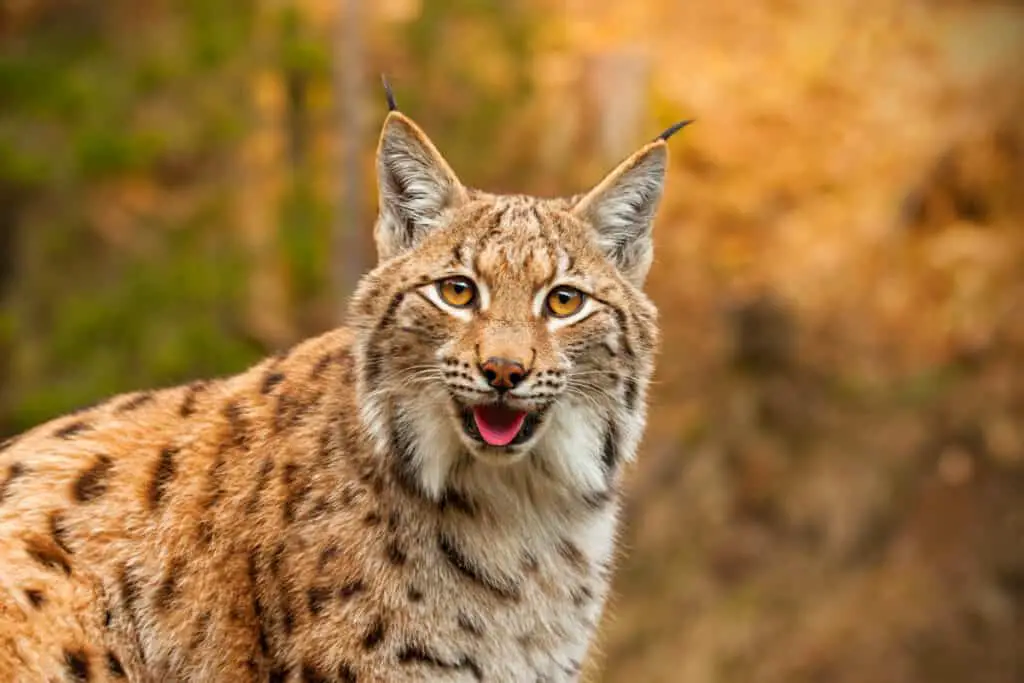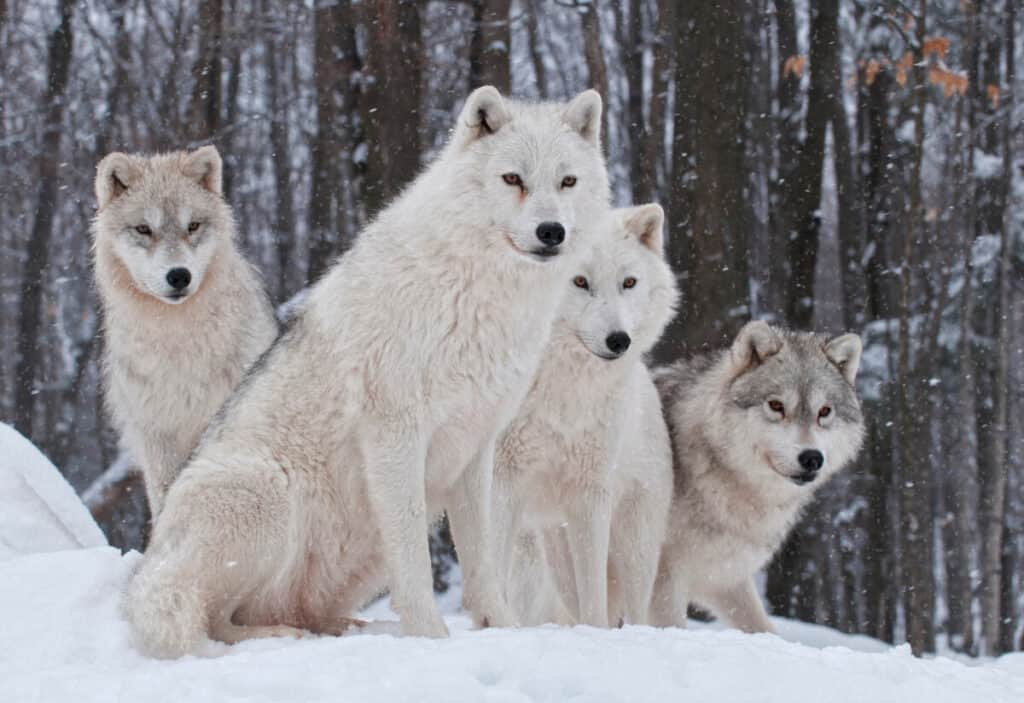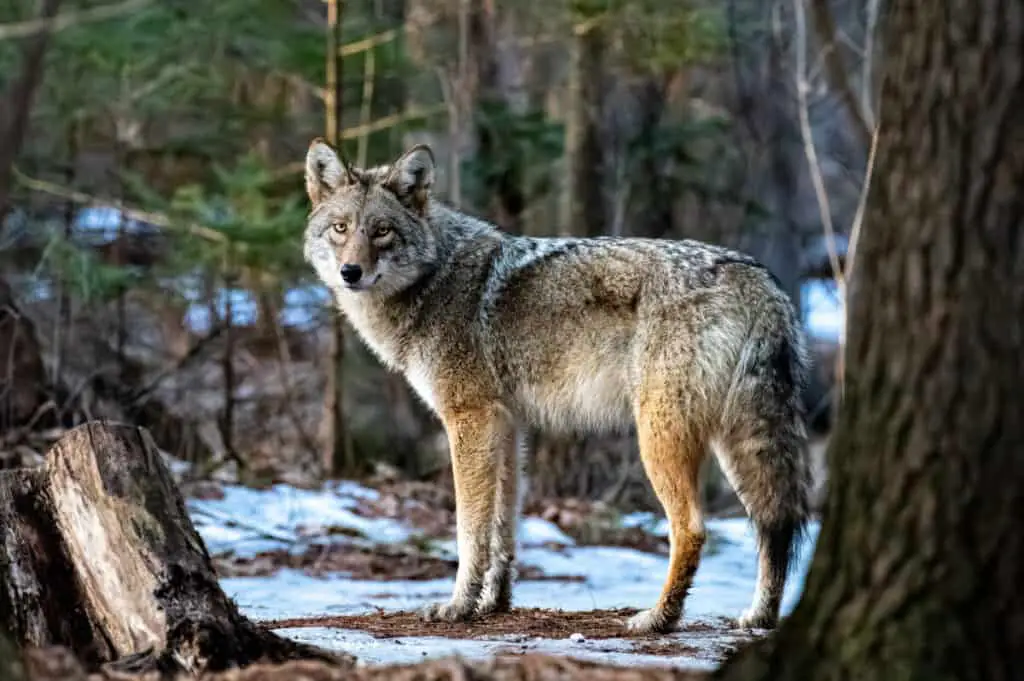The lynx is a medium-sized wild cat that inhabits boreal forests across the Northern Hemisphere. Known for its distinctive tufted ears and short tail, the lynx is an efficient predator capable of hunting a variety of prey including rodents, rabbits, and birds. However, despite its impressive hunting skills, the lynx does have natural predators.
Understanding the natural predators of lynxs is important as it helps us to better understand the complex dynamics of ecosystems in which they live. Predation plays a crucial role in maintaining balance within ecosystems by controlling populations of prey species. As such, identifying and studying the major predators of lynxs can help us to better manage these ecosystems and protect vulnerable species from extinction. In this article, we will explore some of the key factors that influence predation on lynxs including their habitat, food chain relationships, and conservation efforts aimed at protecting these animals.

The Lynx’s Natural Habitat and Hunting Skills
The Lynx’s natural habitat consists of dense forests, where its hunting skills are optimized in stalking and ambushing prey such as small mammals and birds. The Lynx is a solitary predator that hunts alone and relies on its exceptional vision, hearing, and sense of smell to locate prey. Its keen senses allow it to detect the slightest movement or sound from its prey. Once located, the lynx will slowly approach its target with quiet steps until it is close enough to launch an attack.
Lynx hunting techniques involve using stealthy movements to surprise their prey. They use their powerful legs and sharp claws to pounce on their target quickly. The lynx’s preferred food sources are snowshoe hares, rodents like squirrels, voles, rabbits as well as birds that reside in the forest canopy or near water sources. However, they have also been known to take down larger animals such as deer if they are unable to find smaller prey during harsh winters when food is scarce. Overall, the lynx is a skilled hunter that has adapted well to living in forested landscapes where it can thrive by preying upon small animals within its ecosystem.
Understanding the Food Chain in the Lynx’s Ecosystem
Within the ecosystem of the lynx, understanding the dynamics of its food chain is crucial in comprehending its role as a predator and prey. Lynx are known to have a diverse diet, which includes small mammals such as rodents, hares, and rabbits. However, their preferences vary depending on their geographic location and habitat. For instance, lynx living in boreal forests tend to rely heavily on snowshoe hares for food due to their abundance in these areas.
Apart from hares and rabbits, lynx also prey on other species such as birds and deer. They are known to be opportunistic hunters who will take advantage of any available food source within their territory. Interestingly, studies have shown that lynx populations can impact not only their prey species but also other predators in the same ecosystem. This means that changes in lynx population numbers can lead to cascading effects throughout the entire food chain.
Elk’s Predators Exposed: Unveiling the Natural Foes
The Role of Predation in Maintaining Ecosystem Balance
Understanding the interplay between different trophic levels is crucial to comprehend how predation maintains ecosystem balance. Predator-prey dynamics are an essential element of ecological stability, as they help regulate populations and prevent overgrazing or overconsumption of resources. Predators play a vital role in maintaining biodiversity by controlling the abundance of prey species. When predators hunt, they remove individuals from the population, which can lead to reduced competition for resources and increased survival rates for remaining prey.
However, predator-prey interactions are not always straightforward. The removal of predators can have unintended consequences on ecosystems, leading to cascading effects throughout food webs. For example, if wolves were eliminated from Yellowstone National Park in the United States, elk populations would increase dramatically without natural predators to keep them in check. This could result in overgrazing of vegetation and depletion of other herbivore populations that depend on those plants for food. Understanding these complex relationships is essential when making decisions about conservation efforts or managing wildlife populations to maintain ecological stability.
Major Predators of Lynxs in North America
One of the focal points in North America’s ecosystem involves the major predators that hunt lynxs. Lynxs are apex predators, but they still have natural enemies who prey on them. The most common predators of lynxs in North America are cougars, wolves, and coyotes. These animals may compete with lynxs for food resources or pose a direct threat to their survival.
Human impact has also affected the population dynamics of lynxs and their predator species. Interspecies competition for food and habitat has increased due to habitat fragmentation, loss of prey species, and climate change. As humans continue to encroach upon wildlife habitats through urbanization and development, the natural balance between predator-prey relationships is disrupted. This can lead to negative consequences for both predator and prey populations as well as overall ecosystem health.

Wolves
Wolves are highly social and cooperative predators known for their efficient hunting strategies. When it comes to preying on lynx (Lynx lynx or Lynx canadensis), wolves typically target them as a source of food when other prey options are scarce. Wolves have been observed hunting lynx in areas where their ranges overlap, such as boreal forests.
They utilize their strength in numbers and coordinated hunting tactics to increase their chances of success. Wolves often pursue lynx through relentless pursuit, relying on their superior endurance to outlast their feline prey.
With their powerful jaws and sharp teeth, they aim to deliver a killing bite to the lynx, usually targeting the throat or neck region. Lynx, although skilled predators themselves, may fall victim to a determined pack of wolves that can overpower them through sheer size, strength, and collaborative hunting techniques.

Coyotes
Coyotes are opportunistic predators that are widely distributed throughout North America, including regions where lynx can be found. While coyotes generally prefer smaller prey items such as rodents and rabbits, they have been known to scavenge on lynx carcasses or opportunistically hunt young or weakened lynx.
Coyotes are adaptable and resourceful hunters, capable of taking advantage of various food sources. In the case of lynx, coyotes may target them in situations where they are at a disadvantage, such as during periods of scarcity or when the lynx is injured or compromised.
Coyotes can use their speed, agility, and pack dynamics to harass or wear down a lynx, making it vulnerable to predation. However, it is important to note that coyotes are unlikely to pose a significant threat to healthy and adult lynx, as the larger feline species possesses superior size, strength, and predatory capabilities.
Threats to Lynx Populations and Conservation Efforts
The decline of lynx populations and ongoing conservation efforts have become a pressing issue in North America’s ecosystem, highlighting the urgent need for effective measures to protect these magnificent animals. Lynx populations are threatened by various factors such as habitat loss, climate change, hunting, and human-wildlife conflicts. The destruction of their natural habitats due to logging, mining activities, urbanization and expansion of agricultural land has significantly impacted their population size. Climate change has also caused a reduction in snow cover which is essential for lynx survival as it provides them with camouflage from predators and facilitates prey capture.
Conservation challenges for lynx include establishing adequate protections for their habitats, reducing human-wildlife conflicts through education and management policies that minimize the risk of interactions between humans and wildlife. In addition to these challenges, illegal hunting remains a major threat to lynx populations. Hunting regulations are in place to manage hunting but poaching still occurs at high levels. To address these issues, several conservation initiatives have been implemented including captive breeding programs aimed at increasing the population size of endangered species like the lynx. These programs have helped stabilize dwindling populations while providing an opportunity for researchers to study the behavior of these elusive animals in captivity environments before reintroducing them into their natural habitats.
The Impact of Climate Change on Lynx Predators
Climate change is having a significant impact on the survival and habitat of the lynx species. This impact can be seen in the changes to lynx predation patterns, as well as their prey availability. Here are four ways that climate change is affecting lynx predators:
- Shrinking Habitat: With rising temperatures and changing weather patterns, the habitats of many animals are shifting or shrinking. For lynx, this means that their prey may become more difficult to find, forcing them to travel greater distances to hunt.
- Changes in Prey Populations: As temperatures rise, some prey populations may decline due to changes in vegetation or water availability. This can have a ripple effect throughout the food chain, making it harder for predators like lynx to find enough food.
- Increased Competition: As prey populations shift or decline, other predators may compete with lynx for limited resources. This can put added pressure on an already vulnerable species.
- Range Shifts: Some studies suggest that lynx may be expanding their range northward as temperatures warm and snow cover declines in southern regions of their habitat range. However, this expansion may also bring new challenges such as unfamiliar terrain or increased human conflict.
Overall, it is clear that climate change is having a profound impact on not just the ecosystem at large but also its individual components such as predator-prey relationships and predator behavior patterns like those of the lynx species. Understanding these impacts will be crucial for conservation efforts aimed at protecting vulnerable species like the lynx from further harm caused by global warming and other human-induced environmental changes.
Conclusion
In conclusion, the lynx is a highly adapted predator that thrives in cold climates across North America and Eurasia. These solitary animals rely on stealth and agility to hunt their prey, which mainly consists of small mammals like snowshoe hares. However, despite their impressive hunting skills, lynx populations are vulnerable to predation from larger carnivores like wolves and cougars.
Predators play an essential role in maintaining ecosystem balance by controlling the population size of their prey. In this regard, the lynx’s predators help keep its food sources in check, thereby preserving the delicate balance of nature. However, human activities such as habitat destruction and climate change pose significant threats to these magnificent animals’ survival. Conservation efforts aimed at protecting lynx populations can go a long way in safeguarding them against extinction and ensuring that they continue to thrive in their natural habitats for generations to come.
